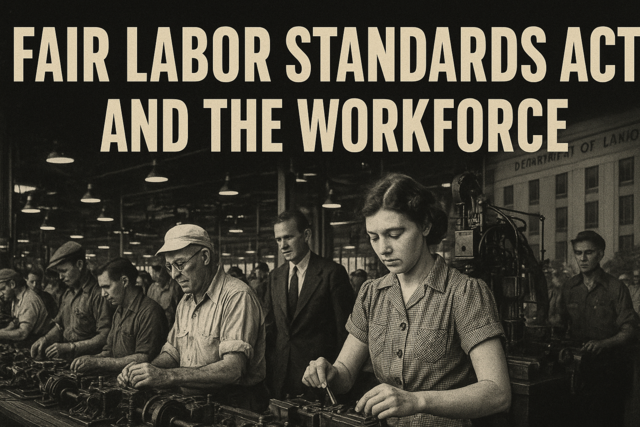Introduction
In this article we will unfasten the parts that make up problem solving to distinguish its root causes from the symptoms -- and then use this information in the identification of the right solution. If it sounds like a daunting challenge � it is, so settle in and focus.
Root causes and symptoms
It seems evident that more effort must be expended to explain what is meant by the terms "root causes" and "symptoms." A root cause is the fundamental part of something, its foundation � in this case a problem. It is apparent that in implementing the problem-solving process, you must begin by identifying the root cause -- or from where the problem emanates.
Finding solutions is impossible, if you don't know what caused the problem to begin with. It is futile to develop a response, when you don't know what it is you are responding to. For example, a social problem that garners a lot of attention is rampant drug use by the impoverished. Social organizations across the country regularly marshal their efforts to address this problem. However, they seem to show little success; so one must ask themselves why that might be. It is likely because they have not identified the root cause of drug use in this socioeconomic group. Needless to say, this is a problem of broad scope � and one that is beyond the ability of the beginning problem solver to manipulate.
There is a process � in four steps that will support the problem solver in identifying root causes. Let us examine that before going further. The steps include data collection, causal factor charting, root cause identification, and recommendations and implementation. Each step must be iterated separately and more fully.
Step 1
The establishment of a root cause begins with the collection of data, much like other processes that all make up the umbrella of "decision making." Data collection for root cause identification is no different than when performing this function as it relates to any other action. This step actually comprises the largest amount of time in the entire process of root cause identification, as it should. You need to have all of the facts to proceed, and any attempt to circumvent, or otherwise cut short, this part of the root cause identification will probably result in a mistaken naming of the problem's source.
The use of a graphic organizer, the simplest of which would be creating a list, is essential in keeping the information catalogued and correlated. This will allow for more facile manipulation, and is true for any process that requires data collection. Moreover, for the beginning problem solver, it is recommended that chart paper be used. Writing things down on over-sized formats allows the learner to "see the big picture." Do not hesitate to continue writing on a second sheet of chart paper � but do not get rid of the first; number them to keep them in order, and use different markers to color code information.
Step 2
The term "causal factor charting" sounds pretty intimidating if you are just beginning to grasp the process of problem solving, or the more basic act of root cause identification. However, a second review of the term should put your mind at ease. First, "charting" is a term for developing a graphic organizer, and a chart is not much more than a list in its most basic form.
Step 3
I ate too much, so I got sick. The result is being ill, the causal factor was eating too much.
Mr. M. smoked a pack of cigarettes a day and got cancer. The result is that the man has cancer, the suspected causal factor is smoking.
Are you getting the hang of it? Good � let's try a couple more.
Mr. Y turned on the oven too high and left his dinner in too long, so his food burned. In this case, there is more than one causal factor, and that will probably happen frequently in real-world problem solving. Problems are usually very complex, but it is good to learn how to manipulate a skill with simple examples that help you gain an expertise and confidence. Let's try one more.
Municipal retirees lost their pensions because the economy went into a recession, which resulted in taxpayers falling behind in their financial obligations. If you said there was more than one causal factor that resulted in municipal retirees losing their pensions, then you are right. Moreover, if you were entering the field of economics, then you would spend more time investigating why the economy fell into recession, because that would be your greatest concern. However, for our purposes, the economy and taxpayer default are adequate identification.
Step 4
Identifying the root cause of a problem usually has a purpose, which is to prevent a recurrence of an event. This involves generating recommendations and implementing them, and that may be something that will fall within your purview sometime in your personal or professional life.
Recap anyone?
So far in this artcle, we have learned what is meant by root causes � which is the foundation of a problem, and learned that these can be identified through four steps that include research, causal factor charting, the act of identifying the most likely causal factor, creating a response to prevent further occurrences.
Now, we are done with half of this artcle's aim. We have learned to identify root causes, we must now be able to distinguish them from symptoms.
Symptoms
Symptoms, on the other hand, are the accompanying evidence of something, or, in this instance, the root cause of the problem. Symptoms are indications that a problem exists. They are attention-getting and reveal that investigation is necessary. One cannot exist without the other, but in order to puzzle through a problem, you must be able to discern between the two. Try the following examples to identify the symptoms.
Mr. U. is limping after he fell down the steps. �Limping' is the symptom of the root cause which is a fall.
Are you getting the hang of it now? Let's try a few more.
Broken glass is all over the floor after Ms. S. dropped her glass. Symptom? That's correct � broken glass. Root cause? Right again � glass dropping on the floor.
One more now!
The car won't start after Mr. L. forget to turn off the headlights before going in the house. What is the symptom � the car won't start, and what is the root cause � leaving the headlights on.
Shall we put it all together now?
First, let's review.
* In this artcle we will separate the parts that make up problem solving, to distinguish its root causes from the symptoms.
* A root cause is the fundamental part of something, its foundation.
*Implementing the problem-solving process begins by identifying the root cause, or from where the problem emanates.
* Finding a solution is not possible, if you don't know the cause of the problem.
* There is a 4-step process that will support the problem solver in identifying root causes. They include data collection, causal factor charting, root cause identification, and recommendations and implementation.
*Symptoms are the accompanying evidence of something - the root cause of the problem. They are indications that a problem exists -- attention-getting -- and indicate investigation is necessary.
The purpose of this artcle is three-fold.
1. Distinguish root causes.
2. Distinguish symptoms.
3. Use them to identify the right solution for the right problem.
SO, we are not quite done yet. We still must understand how to use root causes and symptoms to identify the "right"solution for a problem.
A graphic organizer � in the form of a chart � will help complete this process. For the beginning problem solver, divide your paper or board into three distinguishable parts � labeling them from left to right as "symptoms," "root causes,"�possible solutions'.
Symptoms are the easiest to identify. They are the indication that a problem exists, and they are the impetus for change when a problem cannot be ignored any longer. Symptoms are meant to get the attention of someone to instigate an investigation. It is human nature to overlook, or otherwise ignore, the possibility that a problem may be brewing until such point that it can simply no longer be dismissed. Then it is apparent that action must be taken, and in doing so, the root cause of the problem is identified � and accompanying solutions can be generated. Let us look at some simple examples.
Symptom Root cause Solution
Gained 30 pounds Overeating Go on a diet
Or can't fit into
Current wardrobe
Oil warning light Car needs oil Put oil in the car
flashes red
Left arm is tingling Impending heart attack Go to the hospital
Not enough money Only working part time Get a full time job
to pay bills every
month
Ants in kitchen Garbage sitting out Clean the kitchen
Cupboards
Baby is crying Hungry and wet Change diaper, feed
The baby
When you put it in those terms�
The root cause identification, symptom indicators, and generation of solutions does not seem intimidating at all. The truth is that people can learn almost anything when the information is broken down into manageable concepts and steps.
Let's try a few more.
Symptom Root cause Solution
A pile of dirty laundry Haven't done laundry Do the laundry
in a month
Refrigerator is empty Haven't gone to the grocery Go to the grocery
Work is piling up Haven't stayed on top of it Get busy
Ah, well, if only all of life's problems were so easily resolved!
Improve Problem Solving and Decision Making by Identifying Individual Styles
Introduction
Problem solving is key to decision making, and creativity is important, as well.But as we have discovered, understanding and applying the problem-solving process requires implementing the four steps of problem solving. These are: identification or naming of the problem, researching possible solutions, selecting the most logical solution, and implement and monitor.
However, once a problem has been identified, you must distinguish between the two parts of problem -- either the root cause or its symptoms. Here again, four steps are necessary � and with all of this activity, it is recommended that a graphic organizer be employed to help the problem solver visualize the thinking process.
The four steps to identifying the root cause of a problem are to gather research, create a causal factor chart, reason out the most likely source, and develop and implement a solution. Remember there are indicators of root causes that make them easier to identify. These are called "symptoms," and symptoms are the indicators that a problem exists.
Now that we have reviewed the components of the rather complex process of problem solving, it would be helpful to realize there are a variety of problem-solving styles from which to choose, and if you are able to self-assess your own strengths and weaknesses, it will be simple to establish the technique that is most appropriate for you � and likely to result in the best outcome.
About problem-solving styles
Although any aspect of decision making comes with a variety of options, eventually one approach must be chosen and followed. In fact, the crux of problem-solving styles is having the facility to assess yourself, your capabilities, and your strengths and weaknesses. For those of you who are self-reflective � this is the perfect section for you!
Are you an idealist? A realist? An activist?
According to one expert, there are three styles of problem solving that can be aligned with three different personality types. An idealist is a person who is a dreamer and an optimist. They are the "glass half full" kind of people that are hopeful -- even visionary. The realist is the person we know to have their "feet on the ground." They are rational and reason things out. Finally, the activist is an advocate that is moved to perform. They may have ideals that drive them to act, but they can also be very rational about how they proceed.
Now, how do individuals in each of these categories approach problem solving?
Well, the idealist looks for solutions that are ideal in themselves. While they may view the problem holistically, they seek to incorporate a variety of perspectives for the broadest range of solution options. Moreover, values are important in the final resolution. For example, an idealistic problem solver who is asked to puzzle out a solution to stretching a budget that was designed to feed 200 people to serve 400, instead. The idealistic problem solver would begin with the presumption that the solution is based in the moral need to feed that many people, and there must be a solution. He or she would not rely solely on their own problem-solving ability. Instead, they would "cast a wide net" to allow for the input of as many stakeholders as possible, thereby expanding the opportunity to discover an adequate, suitable, and optimal solution.
Does this sound like the type of problem solver you might be?
The realistic problem solver is sensible. He or she relies on facts and supporting data, and leans towards concrete solutions. If the realistic problem solver were faced with the same problem as the idealist, they might be less inclined to believe a solution is possible. Rather they would use the data to demonstrate that, in the real world, stretching a set amount of food beyond that which it was meant to serve is not worth the time and effort required to figure out an answer. Instead, they may decide that the only real solution is to secure more food.
Now does this sound like the type of problem solver you might be?
Finally, a third type of problem solver, according to one expert, is the activist. This person has a broader, more diverse viewpoint. Their answer is to simply find a solution that works � sensibly. For the activist problem solver, technology is often incorporated, expediency is valued, and innovation and adaptation are both expected components of the process. The concern is getting to a solution via whatever route is optimal.
Are you an activist problem solver?
These are excellent descriptions of problem-solving styles; if they were the only choices that were available, then deciding the category that fits you best would be easy. But there are others who have weighed in on the subject, so let us consider another array of problem-solving styles to expand your options.
Does rational problem-solving style describe you? How about casual? Or do you display signs of avoidance problem-solving style instead?
The rational problem solver is like the realistic problem solver in the previous section. This style of problem solving consists of a methodical approach to coming to a resolution. The rational problem solver will be deliberate and systematic in their approach to considering a challenge and bringing it to a conclusion. They will follow the steps that have been explained repeatedly by identifying the problem, gathering facts, considering the choices, making a selection, and monitoring its implementation for effectiveness.
Are you a rational problem solver?
The casual problem solver tends to take a more cavalier approach to figuring a solution. They may use a "hit and miss" method, where they think of an idea, try it and see if it works, and if it doesn't, then go back and start over again. They use no rhyme or reason, but they can rely on intuition � and that is a powerful innate tool to reason out a problem. If we were to consider how the casual problem solver were to approach the problem of stretching the amount of food to serve double an audience, we would likely find they act impulsively, maybe divvying up the food until they get to the 300th plate and realize they will not have enough, then going back and seeing if there is another organization that would be willing to donate. If they find this is not possible, then perhaps they would quickly attempt to solicit money to buy extra food. Meanwhile, the food remains on the plates � and they are in mid-process of one solution, while searching for another.
Are you a casual problem solver?
The last type of problem solver in this section is the "avoidance" person. This type of problem solver is a procrastinator, plain and simple. They are laid back, do not address problems head on � if at all -- and can even sit back and wait for someone else to recognize that a problem exists, hoping against hope that someone will step in and solve the problem, so they don't have to. This is an authentic style of problem solving, if not wholly legitimate. It depends on others to bring a true resolution to a problem, but that is not to say there aren't a lot of people who approach problem solving from this vantage point. It makes it harder on other types of problem solvers, but for the purposes of this section it is important to be honest and recognize if this describes you.
Are you an avoidance problem solver?
Let us briefly examine one more series of problem-solving styles.
Are your style of problem solving taking command? Working towards consensus? Or random?
Each of these is legitimate, as well. If you are a taking-command style problem solver, then you are the type of person who likes to approach problems head on. You do not want to take the time to massage people's feelings or bring consensus to a resolution. You are a "decision maker" and do not waste time considering the nuances of all aspects of a problem. In your estimation, a problem is pending and a resolution is essential.
Are you a take-command problem solver?
The consensus problem solver is just the opposite. The consensus problem solver sees value in gathering buy-in from all stakeholders. There is some sense to this viewpoint. Often the answer to a problem will not be realized if there is not buy-in from the group. People who do not feel that their ideas were not heard, or valued, can work at direct cross-purposes to carrying out a solution. Consensus in many instances of life is essential, and its value cannot be minimized. Therefore, the consensus problem solver has a legitimate place at the table of problem solving styles.
Are you a consensus problem solver?
Finally, a random problem solver is likely as effective as the avoidance problem solver, and in many ways similar to the casual problem solver. These are people who can make a decision using a coin toss, and cannot see what all the fuss is about, with regard to finding an answer to a challenge. In their minds, if the solution they implement doesn't work then they will simply go back to the drawing board and start all over. They believe there really is not anything that important or life and death about problems � other than life and death itself.
Are you a consensus problem solver?
What else do you need to know about problem-solving styles?
It cannot be overemphasized that problem-solving styles are really a reflection of people's personalities, and the way they approach other aspects of their lives. In other words, the way someone handles or manages their personal business is going to carry over to how they handle problems and solutions.
A brief review of the various styles discussed in this section confirms that the way you handle opportunities, manage change, and respond naturally to events is going to be reflected in your style of problem solving. One is not more right or wrong than another � because we are all individuals, and it takes all kinds to make the world go round. That is even true of the avoidance, casual, and random styles of problem solving that others might evaluate as less-than-acceptable. Remember, if there wasn't an avoidance problem solver, then we would not need the command problem solver, or the rational problem solver. Conversely, as long as there ARE command problem solvers and rational problem solvers, there will always be a place for the casual problem solver and the random problem solver!
Once you have decided what style of problem solving best reflects the person that you are � you might be asking yourself � can I change? For example, if I am a consensus problem solver, can I become a command problem solver?





























